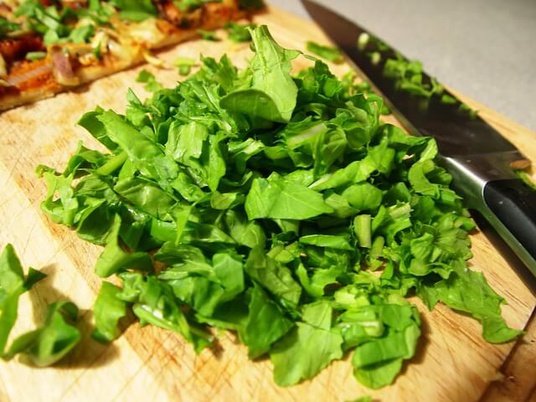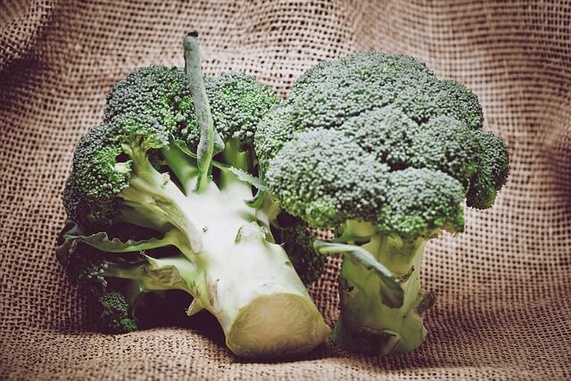Les petites feuilles de roquette et de cresson ont un petit goût piquant. Utilisées en salades, sur un sandwich, en potage, en sauces ou ajoutées à vos jus de légumes frais, elles permettent de relever la saveur de nombreuses préparations.
Mais leurs vertus ne se limitent pas à cela…
En effet, comme beaucoup d’autres légumes de la famille des brassicacées (crucifères), la roquette et le cresson contiennent des composés phytochimiques actifs très intéressants du point de vue santé.
Plusieurs études épidémiologiques ont démontré qu’une consommation régulière de légumes et de fruits frais diminuait le risque de problèmes cardiovasculaires, d’autres problèmes chroniques, voire même de dégénérescences graves ou de cancer.
Quels sont donc les éléments protecteurs contenus dans ces petites feuilles bienfaisantes ?
Feuilles et graines de roquette et de cresson contiennent des flavonoïdes, comprenez par là des antioxydants. Pour la roquette c’est principalementde la quercétine. Il est prouvé que la consommation d’aliments contenant des antioxydants et de la quercétine effectue une prévention par rapport aux risques de cancers.
Ces deux végétaux contiennent également de petites quantités de lutéine, de zéaxanthine et de bêta-carotène, autant de caroténoïdes tous antioxydants et protecteurs.

Potassium, Calcium, Fer, Magnésium, Sélénium, Vitamine C, Vitamine B5 et B9 font aussipartie de l’arsenal de ces deux plantes.
Grâce à ses 17 éléments nutritifs, y compris les fibres et les protéines, le cresson est très reminéralisant (carence en fer notamment), il limite les dommages neuronaux, combat les infections diverses et maintient l’intégrité des tissus conjonctifs.
Quant à la roquette, elle constitue une excellente source de vitamine K et d’acide folique (vitamine B9).
Cette richesseminérale et vitaminique confère à ces 2 plantes un pouvoir alcalinisant important. Agir sur l’équilibre acido-basique est le meilleur atout de votre corps pour se protéger des maladies, même les plus graves comme le cancer puisque l’on sait que de nombreuses tumeurs se développent particulièrement en terrain acide.
Encore les glucosinolates !
La roquette et le cresson, comme la majorité des crucifères, renferment des glucosinolates, dont la glucoraphanine. Les graines germées en contiendraient plus que les feuilles épanouies. Si la concentration en glucosinolate peut varier selon les conditions et les régions de culture (exposition au soleil, température, sol, etc.), ils en contiendraient cependant davantage que le brocoli, le chou-fleur et de nombreuses variétés de choux (blanc, rouge, chou de Savoie). Et le cresson alénois en serait 4 fois plus riche que le cresson de fontaine.
Lors de la mastication ou de leur ingestion, la glucoraphanine est transformée en sulforaphane, un composé chimioprotecteur potentialise le pouvoir détoxiquant de ce légume. D’autres molécules de la famille desglucosinolates ont la capacité de se transformer en isothiocyanates (autres molécules actives bénéfiques et protectrices) lorsque l’aliment est haché, mastiqué ou au contact de la muqueuse intestinale. Des chercheurs ont également découvert que le phényléthyl isothiocyanate (PEITC) du cresson appelé permet de supprimer le développement du cancer des cellules mammaires et prévenir les dommages de l’ADN dans les cellules cultivées, comme le font également les pousses de brocoli.
Toute source d’antioxydants, de minéraux, de vitamines et d’enzymes protège contre les dommages des radicaux libres et soutient la régénérescence des cellules.
Les légumes verts riches en chlorophylle sontégalement riches en oxygène. Oxygéner les tissus permet d’éviter la croissance de cellules anormales, de virus et de bactéries qui se développent principalementdans un environnement pauvre en oxygène.
Excepté le principe actif phytochimique protecteur et détoxifiant qu’est le sulforaphane présent dans le brocoli, le cresson et la roquette sont parmi les légumes les plus riches en nutriments.

Comme pour tousles végétaux, une cuisson à haute entraîne une perte importante d’éléments nutritionnels, glucosinolates et sulforaphane compris.
C’est pourquoi consommer des feuilles crues ou des graines germées reste le meilleur moyen de bénéficier de l’ensemble de leurs bienfaits.
Faire germer vos propres graines de cresson, de roquette ou de brocoli constitue donc le moyen le plus efficace et le plus économique de bénéficier des apports nutritionnels de ces végétaux.
La germination peut se faire en intérieur, été comme hiver. Elle demande peu de place et elle potentialise lesnutriments contenus dans ces légumes. Le germe ou la graine germée peut contenir jusqu’à 30 fois plus d’éléments nutritifs que le légume bio issu de cette graine ! La germination permet également de rendre les vitamines, minéraux, acides aminés et acides gras essentiels bien plus biodisponibles.
Cresson, roquette, graines de tournesol, pois, brocoli et toutautre chou vous permettront de varier les plaisirs et les goûts tout en bénéficiant des propriétés anticancéreuses et de détoxification qu’apporte ces légumes et encore plus leurs germes.



